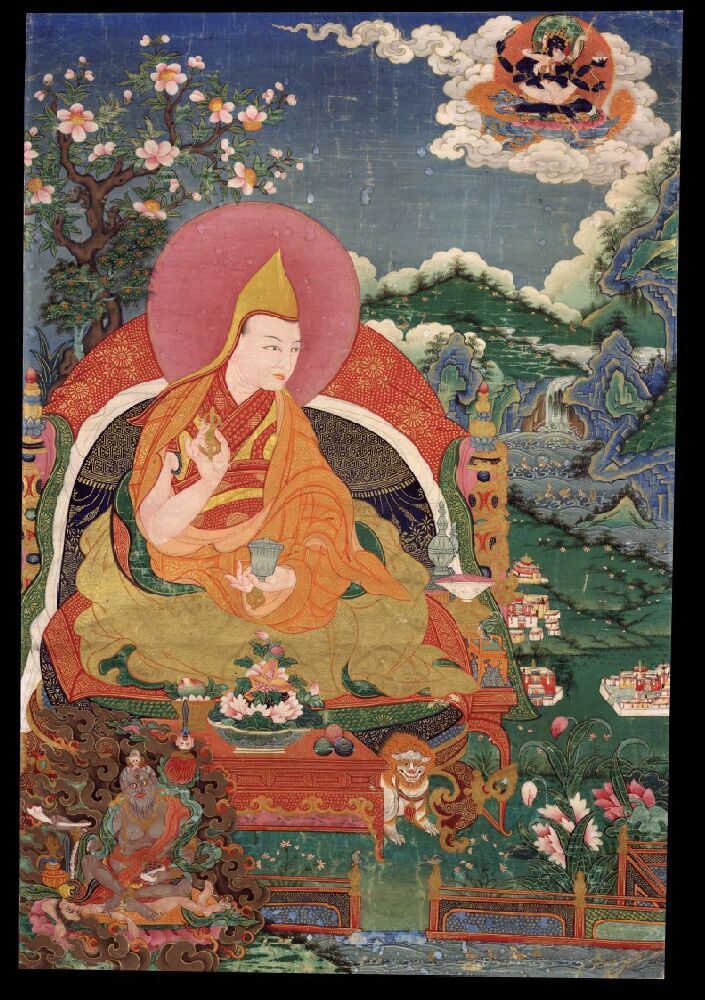
On May 24, 1956, India’s first President, Dr Rajendra Prasad announced that the ridge area of Delhi, a large and green-belt area in the capital, was henceforth to be known as the Buddha Jayanti Park. In May 1956, Buddha Jayanthi celebrations commenced in India and lasted the entire year. By then, the GoI had already extended official invitations to the Dalai Lama and Panchen Lama.

During the meeting, Rinpoche informed him about the purpose of his visit and spoke at length about other matters. Four days later, on January 30, 1956, Rinpoche had a private audience with the Dalai Lama at the famed Potala Palace in Lhasa. In an interesting aside, on January 26, 1955, Rinpoche had the honour of unfurling the Indian national flag in the Consul General of India premises at Deki Ling during Republic Day celebrations. There, he was apprised of the growing Chinese presence in the region, and other confidential matters. On December 29, 1955, Rinpoche arrived in Lhasa, where he stayed for a couple of days at the residence of PN Menon, India’s then Consul General. Rinpoche was asked to lead the Indian delegation to Tibet, where he would personally meet with Tibetan officials. He was also singularly responsible for the revival of Buddhism in Mongolia during his 10-year stint as India’s ambassador to Mongolia. To the uninitiated, the 19th Bakula Rinpoche was both a revered Buddhist spiritual master and a statesman of immense stature from Ladakh. The government also chose to appoint Kushok Bakula Rinpoche, the noted Buddhist monk and Ladakhi statesman, as a member of the organising committee. Vice President Dr S Radhakrishnan was appointed the head of the organising committee. Taking a personal interest in arranging this special event, India’s first Prime Minister Pandit Jawaharlal Nehru felt that the country could use this occasion to project itself as a leading Asian power in the post-colonial era. In line with Buddhism’s resonance on the new Republic, the Government of India decided that in 1956 it will sponsor and organise nationwide celebrations of the 2500th anniversary of the Buddha’s birth. The four-headed lion capital of the Buddhist Emperor Ashoka, representing the fearless proclamation of Dharma to the four quarters of the world, was adopted as the official seal of the Republic. "My Land and My People is, without a doubt, one of the most moving memoirs I have ever read" (Stanley Gosh, Saturday Review).The Ashoka Chakra in the centre of the white section of the Indian flag is the Law of Dharma wheel – a Hindu and Buddhist symbol.

As Tibet's leader-in-exile, he has worked tirelessly not only on behalf of the Tibetan people but as a voice for human rights worldwide. In 1959, following the Chinese suppression of the Tibetan national uprising, he was forced to seek asylum in India. Recognized at the age of two as the reincarnation of the Thirteenth Dalai Lama, Tenzin Gyatso was brought to Lhasa, the capital of Tibet, and enthroned two years later as the fourteenth Dalai Lama. Housed in a custom half morocco clamshell box. Near fine in a near fine price-clipped dust jacket with light rubbing. Signed by His Holiness the Dalai Lama on the title page. Octavo, original half cloth, illustrated. $12,000.00 Item Number: 136902įirst edition of the Dalai Lama’s first autobiography. My Land and My People: The Memoirs of His Holiness The Dalai Lama.


 0 kommentar(er)
0 kommentar(er)
